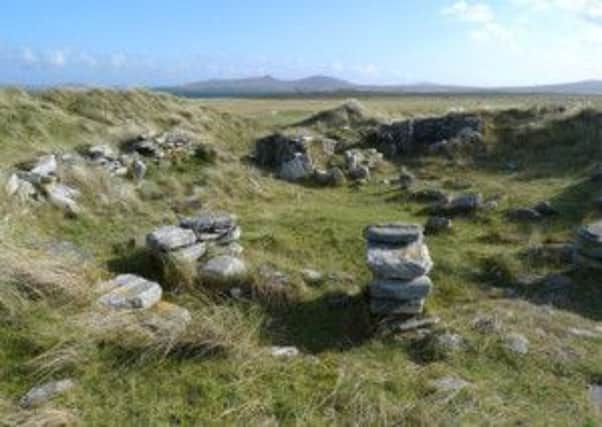Significant North Uist finds to return to Hebrides


Evidence from over 5,000 years, from the Neolithic to the 20th Century, has been discovered during the Udal Project in Grenitote, North Uist.
The remains at Udal provide an “unbroken timeline” of occupation, including from the Bronze Age, Iron Age, Viking, Medieval through to the 1900s.
Advertisement
Hide AdSome of the evidence at the site was immaculately preserved by wind-blown sand dunes, which is rare outside the Middle East.
Western Isles Council has said a request to the Scottish Archaeology Finds Allocations Panel has been successful and all remains are being allocated to Museum na Eilean at Stornoway.
Archaeologist Ian Crawford, who has worked on the Udal Project from the 1960s to the 1990s, said the site was of international significance.
He added: “It is arguably the most consequential site in Europe in terms of extent, depth and complexity of deposits and artefact retrieval, its importance to Scottish History in particular cannot be overstated.”
The post-excavation research, funded by Historic Scotland, has been managed by the council archaeologist, Deborah Anderson, and the lead researcher, Dr Beverley Ballin Smith.
This assessment has now been completed and once the analysis and the final reports have been completed, the items will return to the islands.
Advertisement
Hide AdThe earliest Neolithic layers consist of a line of stones with a large upright stone nicknamed the great auk stone because of its resemblance to the extinct seabird.
A deep shaft containing quartz pebbles which had been covered over with a whale’s vertebrae was also uncovered.
Advertisement
Hide AdFrom the Bronze Age, finds included a skeleton and from the Iron Age evidence of metal work.
Also, from the Iron Age were the remains of homes dubbed Jelly Baby houses because the shape of them looked like the sweets.
Evidence of a Viking longhouse and later occupation during the 1600s through to the 18th and 19th Centuries were also found.
From the early 20th Century was a saw pit for cutting up wrecked boats.
This chronological depth had not been discovered before on a single site excavation in Scotland and provides a remarkable and unique sequence with which to date other sites on the Atlantic fringe.
This is one of the largest post excavation research projects ever to be undertaken in the UK.
Advertisement
Hide AdMr Crawford excavated the equivalent of 40 acres worth of occupationlevels, with 30,000-plus special finds and 40 cubic metres of material recovered.
The Udal site has also produced a wealth of evidence and potentialinformation in the form of artefacts and samples unparalleled in the UK.
Advertisement
Hide AdMost of the organic samples were very well-preserved in the alkaline shell sands of the machair and constitute outstanding assemblages.
The pottery is also exceptional in the amount that was recovered, withover a quarter of a million sherds from one site alone.
A community survey in 2011 commissioned by Highlands and Islands Enterpris and carried out by the North Uist Development Company revealed that 97% of respondents agreed that material from Udal should be returned to the islands.
Western Isles MSP Alasdair Allan said: “This development is great news. The Udal excavations provide a unique insight into the settlement of a single site over a period of 5000 years, and for that reason alone the finds from the site are worthy of research.
“I hope that this cooperation between different agencies is another further step towards being able to interpret and display some of the finds to a wider audience.”
Councillor Uisdean Robertson said: “Underpinning the development of this project is a partnership with the local community, including the Comhairle, Historic Scotland, The North Uist Development Company and other stakeholders.
Advertisement
Hide Ad“It demonstrates the power of archaeology to bring communities together through a positive view of archaeology and create a legacy for North Uist and the Outer Hebrides.”
Councillor Archie Campbell added: “The Comhairle continues to look at funding streams and opportunities to build on the potential the Udal Archive has to bring additional social and economic benefit to the Uists and the Outer Hebrides. The timeline gained from the Udal fills a gap in local knowledge, as well as regional and national
understanding of the cultural heritage of the Outer Hebrides.”
READ MORE